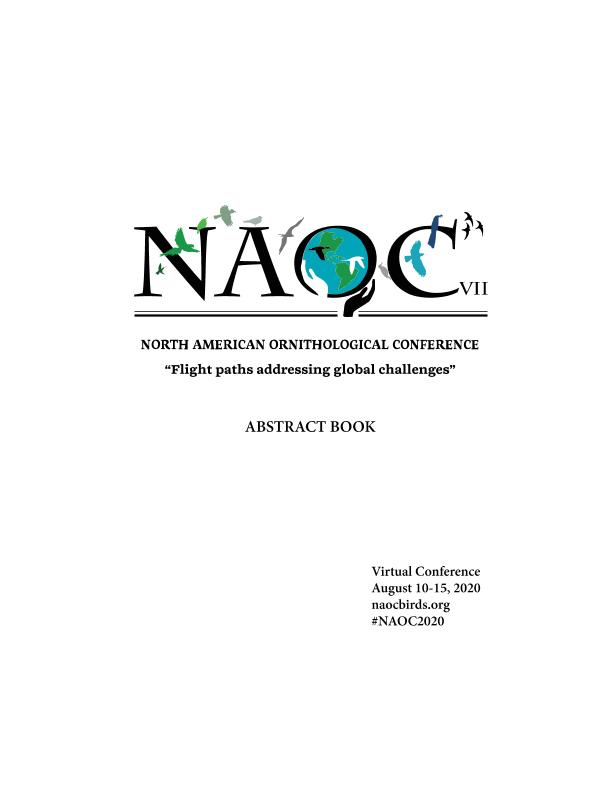Evento
Wildlife photography and digital photo-identification is a growing field that enhances many ecological features of avian population studies. Traditionally, binoculars and telescopes have been used to collect resighting data from marked birds, but the use of a non-invasive and complementary tool, such as a camera with telephoto lenses, has recently become a commonplace practice to identify flag codes on small banded shorebirds. We conducted surveys to resight marked Two-banded Plover (Charadrius falklandicus) adults between September and December 2017-2019 in northern Patagonia, Argentina, in order to explore site fidelity at their breeding grounds. Plovers were banded during the austral spring and summer using an orange flag with alphanumeric code placed on the tibia and a metal ring in the tarsus according to guidelines from the Pan American Shorebird Protocol. Banded plovers` detection and the ability to read flag codes in the field can be low when using binoculars and/or telescopes due to Patagonia´s characteristically strong wind conditions, which often limit field work activities. Hence, we used cameras with telephoto zoom lenses to increase accuracy when reading flag codes, allowing for banded plover´s individual identification. This fieldwork was possible due to the key participation of wildlife photographers, who contributed significantly with their time, expertise, and knowledge. In addition, several of the photographers belong to the Argentine Association of Nature Photographers (AFONA: www.afona.com.ar). Lastly, we strongly encourage the use of this technique as a complementary tool to improve banded bird´s detection and to verify flag codes. La fotografía de vida silvestre y la identificación a través de fotos digitales es un campo en crecimiento que mejora muchas características ecológicas de los estudios sobre las poblaciones de aves. Tradicionalmente, los binoculares y telescopios se han utilizado para recopilar registros observacionales de las aves marcadas, pero el uso de una herramienta no invasiva y complementaria, como una cámara con teleobjetivos, se ha convertido recientemente en una práctica común para identificar códigos de banderillas en aves playeras marcadas. Entre septiembre y diciembre de 2017-2019, realizamos relevamientos para reavistar adultos de chorlos doble collar (Charadrius falklandicus) en el norte de Patagonia, Argentina, para explorar la fidelidad a sus sitios de reproducción. Durante la primavera y el verano austral, los chorlos doble collar fueron anillados con un anillo de metal en el tarso y una banderilla naranja con código alfanumérico en la tibia, siguiendo los lineamientos del Protocolo Panamericano de Aves Playeras. La detección de las aves anilladas y la capacidad de leer los códigos de las banderillas en el campo puede ser baja cuando únicamente se usan binoculares y/o telescopio, puesto que las condiciones climáticas, como los fuertes vientos característicos de la Patagonia, a menudo limitan las actividades de trabajo de campo. Por lo tanto, utilizamos cámaras con teleobjetivos para aumentar la precisión al leer los códigos de banderilla, lo que permitió la identificación individual de cada chorlo marcado. Este trabajo de campo fue posible debido a la participación clave de fotógrafos de vida silvestre, quienes contribuyeron significativamente con su tiempo, experiencia y conocimiento. Además, varios de ellos pertenecen a la Asociación Argentina de Fotógrafos de Naturaleza (AFONA: www.afona.com.ar). Por último, recomendamos fuertemente el uso de esta técnica como una herramienta complementaria para mejorar la detección de las aves marcadas y verificar los códigos de las banderillas.
Improving Resightings of Two-Banded Plovers Flag Codes by using Digital Photo-Identification in Patagonia, Argentina
Hevia, Glenda Denise ; Fiorito, Carla Daniela
; Fiorito, Carla Daniela ; Terorde, Noé; Jordan, Fredrick D.; Podestá, Darío Hector
; Terorde, Noé; Jordan, Fredrick D.; Podestá, Darío Hector ; Esmoris, Agustín; Villareal, Rubén F.; Burgueño, Luis; Corbalán, Nicolás S.; Chaparro, Martín A.; Bertellotti, Néstor Marcelo
; Esmoris, Agustín; Villareal, Rubén F.; Burgueño, Luis; Corbalán, Nicolás S.; Chaparro, Martín A.; Bertellotti, Néstor Marcelo ; D'amico, Veronica Laura
; D'amico, Veronica Laura
 ; Fiorito, Carla Daniela
; Fiorito, Carla Daniela ; Terorde, Noé; Jordan, Fredrick D.; Podestá, Darío Hector
; Terorde, Noé; Jordan, Fredrick D.; Podestá, Darío Hector ; Esmoris, Agustín; Villareal, Rubén F.; Burgueño, Luis; Corbalán, Nicolás S.; Chaparro, Martín A.; Bertellotti, Néstor Marcelo
; Esmoris, Agustín; Villareal, Rubén F.; Burgueño, Luis; Corbalán, Nicolás S.; Chaparro, Martín A.; Bertellotti, Néstor Marcelo ; D'amico, Veronica Laura
; D'amico, Veronica Laura
Tipo del evento:
Conferencia
Nombre del evento:
VII North American Ornithological Conference: “Flight paths addressing global challenges”
Fecha del evento:
10/08/2020
Institución Organizadora:
American Ornithological Society;
Título del Libro:
VII North American Ornithological Conference “Flight paths addressing global challenges”. Abstract Book
Editorial:
American Ornithological Society
Idioma:
Inglés
Clasificación temática:
Resumen
Palabras clave:
MARKED SHOREBIRDS
,
PATAGONIA
,
TWO BANDED PLOVERS
Archivos asociados
Licencia
Identificadores
Colecciones
Eventos(CESIMAR)
Eventos de CENTRO PARA EL ESTUDIO DE SISTEMAS MARINOS
Eventos de CENTRO PARA EL ESTUDIO DE SISTEMAS MARINOS
Citación
Improving Resightings of Two-Banded Plovers Flag Codes by using Digital Photo-Identification in Patagonia, Argentina; VII North American Ornithological Conference: “Flight paths addressing global challenges”; Virtual Conference; Estados Unidos; 2020; 218-218
Compartir



